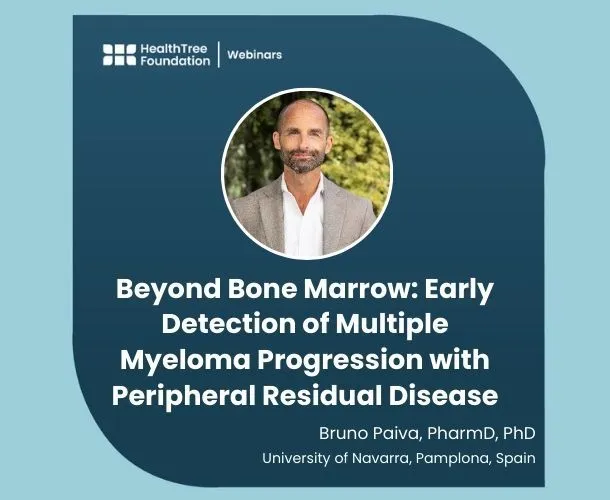The Many Benefits of Life Insurance- Part 2: How It Can Be a Lifesaver to You, Your Wallet and Your Family

Last week, I reviewed different types of Insurance: Term and Permanent Insurance policies. This week I'm going to examine the benefits and options of insurance that you may find helpful. Some benefit options can prevent you from financial ruin and can give you access to funds to help pay for treatment. This article and the last on insurance is referencing policies already enforce. The benefits that I am reviewing are more readily available in aged policies and for insured persons that are older and or ill.
Many people buy insurance for the sole purpose of providing for loved ones after their death. However, most insurance policies have attached benefits to them that you may have forgotten about. I recommend that you take some time and pull out all of your policies and review them. If you don’t understand the policy, call your agent or the insurance company, they will be glad to help. Perhaps you have a policy that is quite old and the insurance company has been purchased by another company or has been renamed. You should have gotten notification of these changes. You can also go online and search for changes.
It's important to first determine the type of policy you have. If it is a term policy, has it been terminated or is it still enforce? If still enforce, what kind of options do you have? Can it be converted to a permanent policy? If you are ill, this can be very valuable, especially since it can be done generally without a medical exam. Be aware of time limits to make conversions in the policy. You can change a portion of the policy or all of it before you reach a certain age. Since these policies are based on age, your premium will be higher. However, if you can afford it, it may be an option, depending on your needs. Depending on your policy, this could be beneficial. Especially, if your policy is nearing its term life end and you may now be uninsurable due to an illness. Don't let the policy lapse without looking at your options!
Permanent policies often have riders attached. Some are extras and will come with additional costs. Check your policy to see if has any of the following riders:
- Accelerated death benefit - This lets you collect a portion of your death benefits if you become terminally ill
- Accidental death benefit – Provides a higher death benefit if you die as a result of an accident
- Critical illness rider – Offers money if you’re diagnosed with a critical illness
- Long term care rider – Gives you money from your death benefit for long term care costs
- Guaranteed insurability rider – Provides a policy without a medical exam
- Waiver of premium rider – Let's you skip your premium if you become disabled
Any of these can be beneficial to you should your policy have them.
Let's review some additional options that you may find beneficial, especially if you need access to funds to help pay for the cost of treatment or other expenses. These options can be helpful and important to understand especially if: your life insurance needs have changed or are no longer needed, if your policy is about to expire but has the option to continue, or if your current policy is too expensive for you to continue and you'd like to access the cash value.
Life Insurance Sale:
There are two types of life insurance sales. These are very much like the name suggests- you are selling your policy to a third party in return for a lump sum payout of cash. The payment is in excess of the policy cash value.
- Viatical Agreements: The insured must have a terminal illness. The policyholder forfeits any rights and death benefits. The agreement does not pay out the full death benefit of the policy and is provided in a single payment.
- Life Insurance Settlement: A terminal illness is not required, however, the insured must be at least 60 years old. Policyholder gives uprights and death benefit. Also, the settlement is not for the full value of the death benefit. Term policies with conversion options on them as well as permanent policies can be used. If the term policy is nearing its end instead of losing it- convert it to a permanent policy. Or, if a permanent policy has cash value but the insurance needs are not what they used to be and the premium is high, it can be a viable option. It is possible in many instances to get more out of the policy than the cash value if a life settlement is done Proceeds can be taxable as income or capital gains. Be aware of possible taxable consequences
Life Insurance Loan:
Can use term, universal, whole life, group (Employer-provided), and Federal Employers Group Life Insurance Plans. Generally, the payout is in 2 installments, The first to the insured, and the balance after fees, interest, and payouts go to the beneficiaries. The loans are based on the face value without regard to the cash value. Repayment of the loan is available and additional funds may be available if there is a change in medical status. Generally, this is a non-taxable event. Keep up with the value of the policy as well as the interest that will be accruing on the policy after the loan. This interest, as well as the premiums that the company is paying on your behalf, is reducing the death benefit. Consider making interest payments if possible. Also, consider the ramifications if you outlive the terms of the loan contract.
Accelerated Death Benefit:
Lets you access a portion of your life insurance policy's death benefit while you are living. Typically you must have been diagnosed with a chronic or terminal illness to trigger the benefit. Most term and life insurance policies now include the benefit for terminal illness, and often at no cost to you. Accelerated benefits for chronic illnesses are more commonly offered as a rider on permanent life insurance policies. Some insurers charge extra for this. The payout can vary from insurer to insurer. Some, pay a lump sum while generally for chronic illnesses it is likely to be monthly payments. There are limits to chronic illness payments as well. Generally, insurance premiums cease when the benefit has started. In most cases, you will not have to pay taxes on the payout for terminal illness. There may be administrative fees or service charges to access this benefit. The death benefit paid to your beneficiaries will be reduced by the amount paid out from the accelerated death benefit.
All of these options have their pros and cons. The time from application to contract will differ with the type of option you choose as well as the amount of the payout. Be aware of losing death benefits and all associated costs such as; interest, and fees, as well as possible tax ramifications. Work with a CPA and a financial professional to review your best options and to understand the process as they can be complicated. Please do your due diligence before signing on the dotted line!
Diahanna shares her financial experience and knowledge as a Financial Coach for the Myeloma Coach program. She and other Myeloma Coaches have experience with financial resources to assist with navigating the costs of myeloma treatment. If you have questions about how to pay for myeloma treatment and related expenses a Myeloma Coach can help.
find or become a myeloma coach
Last week, I reviewed different types of Insurance: Term and Permanent Insurance policies. This week I'm going to examine the benefits and options of insurance that you may find helpful. Some benefit options can prevent you from financial ruin and can give you access to funds to help pay for treatment. This article and the last on insurance is referencing policies already enforce. The benefits that I am reviewing are more readily available in aged policies and for insured persons that are older and or ill.
Many people buy insurance for the sole purpose of providing for loved ones after their death. However, most insurance policies have attached benefits to them that you may have forgotten about. I recommend that you take some time and pull out all of your policies and review them. If you don’t understand the policy, call your agent or the insurance company, they will be glad to help. Perhaps you have a policy that is quite old and the insurance company has been purchased by another company or has been renamed. You should have gotten notification of these changes. You can also go online and search for changes.
It's important to first determine the type of policy you have. If it is a term policy, has it been terminated or is it still enforce? If still enforce, what kind of options do you have? Can it be converted to a permanent policy? If you are ill, this can be very valuable, especially since it can be done generally without a medical exam. Be aware of time limits to make conversions in the policy. You can change a portion of the policy or all of it before you reach a certain age. Since these policies are based on age, your premium will be higher. However, if you can afford it, it may be an option, depending on your needs. Depending on your policy, this could be beneficial. Especially, if your policy is nearing its term life end and you may now be uninsurable due to an illness. Don't let the policy lapse without looking at your options!
Permanent policies often have riders attached. Some are extras and will come with additional costs. Check your policy to see if has any of the following riders:
- Accelerated death benefit - This lets you collect a portion of your death benefits if you become terminally ill
- Accidental death benefit – Provides a higher death benefit if you die as a result of an accident
- Critical illness rider – Offers money if you’re diagnosed with a critical illness
- Long term care rider – Gives you money from your death benefit for long term care costs
- Guaranteed insurability rider – Provides a policy without a medical exam
- Waiver of premium rider – Let's you skip your premium if you become disabled
Any of these can be beneficial to you should your policy have them.
Let's review some additional options that you may find beneficial, especially if you need access to funds to help pay for the cost of treatment or other expenses. These options can be helpful and important to understand especially if: your life insurance needs have changed or are no longer needed, if your policy is about to expire but has the option to continue, or if your current policy is too expensive for you to continue and you'd like to access the cash value.
Life Insurance Sale:
There are two types of life insurance sales. These are very much like the name suggests- you are selling your policy to a third party in return for a lump sum payout of cash. The payment is in excess of the policy cash value.
- Viatical Agreements: The insured must have a terminal illness. The policyholder forfeits any rights and death benefits. The agreement does not pay out the full death benefit of the policy and is provided in a single payment.
- Life Insurance Settlement: A terminal illness is not required, however, the insured must be at least 60 years old. Policyholder gives uprights and death benefit. Also, the settlement is not for the full value of the death benefit. Term policies with conversion options on them as well as permanent policies can be used. If the term policy is nearing its end instead of losing it- convert it to a permanent policy. Or, if a permanent policy has cash value but the insurance needs are not what they used to be and the premium is high, it can be a viable option. It is possible in many instances to get more out of the policy than the cash value if a life settlement is done Proceeds can be taxable as income or capital gains. Be aware of possible taxable consequences
Life Insurance Loan:
Can use term, universal, whole life, group (Employer-provided), and Federal Employers Group Life Insurance Plans. Generally, the payout is in 2 installments, The first to the insured, and the balance after fees, interest, and payouts go to the beneficiaries. The loans are based on the face value without regard to the cash value. Repayment of the loan is available and additional funds may be available if there is a change in medical status. Generally, this is a non-taxable event. Keep up with the value of the policy as well as the interest that will be accruing on the policy after the loan. This interest, as well as the premiums that the company is paying on your behalf, is reducing the death benefit. Consider making interest payments if possible. Also, consider the ramifications if you outlive the terms of the loan contract.
Accelerated Death Benefit:
Lets you access a portion of your life insurance policy's death benefit while you are living. Typically you must have been diagnosed with a chronic or terminal illness to trigger the benefit. Most term and life insurance policies now include the benefit for terminal illness, and often at no cost to you. Accelerated benefits for chronic illnesses are more commonly offered as a rider on permanent life insurance policies. Some insurers charge extra for this. The payout can vary from insurer to insurer. Some, pay a lump sum while generally for chronic illnesses it is likely to be monthly payments. There are limits to chronic illness payments as well. Generally, insurance premiums cease when the benefit has started. In most cases, you will not have to pay taxes on the payout for terminal illness. There may be administrative fees or service charges to access this benefit. The death benefit paid to your beneficiaries will be reduced by the amount paid out from the accelerated death benefit.
All of these options have their pros and cons. The time from application to contract will differ with the type of option you choose as well as the amount of the payout. Be aware of losing death benefits and all associated costs such as; interest, and fees, as well as possible tax ramifications. Work with a CPA and a financial professional to review your best options and to understand the process as they can be complicated. Please do your due diligence before signing on the dotted line!
Diahanna shares her financial experience and knowledge as a Financial Coach for the Myeloma Coach program. She and other Myeloma Coaches have experience with financial resources to assist with navigating the costs of myeloma treatment. If you have questions about how to pay for myeloma treatment and related expenses a Myeloma Coach can help.
find or become a myeloma coach

about the author
Diahanna Vallentine
Diahanna is the Financial Program Manager for the HealthTree Foundation, specializing in financial help for multiple myeloma and AML patients. As a professional financial consultant and former caregiver of her husband who was diagnosed with multiple myeloma, Diahanna perfectly understands the financial issues facing myeloma patients.
More on Navigating Your Health
Upcoming Events




Get the Latest Multiple Myeloma Updates, Delivered to You.
By subscribing to the HealthTree newsletter, you'll receive the latest research, treatment updates, and expert insights to help you navigate your health.












